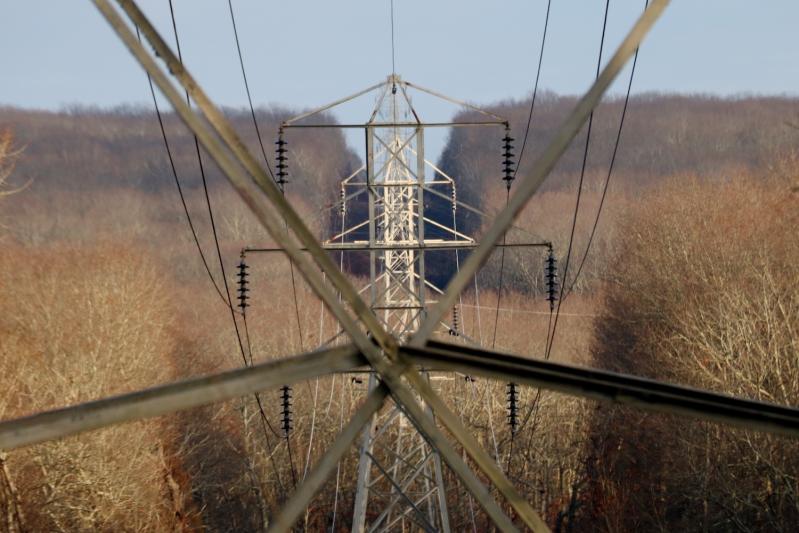Shortly after Superstorm Sandy in 2012, Bruce Bates, then and still the emergency preparedness coordinator for the Town of East Hampton, told The Star that “getting assets and resources out here is difficult, at best. It seems that when supplies are heading east, they seldom get past Yaphank or Riverhead.”
What, then, to expect of the East End’s ability to deal with a long-term emergency? There is a lot to worry about, globally, these days. For example, on Jan. 31, Christopher Wray, the director of the Federal Bureau of Investigation, testified to a congressional House committee that hackers backed by the Chinese government had been targeting key parts of the country’s infrastructure, including the electrical grid and water-treatment plants.
“They say all politics are local; well, all issues involving the grid are local, too,” said Jim Larocca, a former mayor of Sag Harbor, who was also a chairman and trustee of the Long Island Power Authority and was New York’s first commissioner of energy. “This community is vulnerable to what happens on the rest of Long Island, the state, and in the Northeast.” In terms of what Mr. Wray was saying, he’s worried about it, “and I think we should be, too.”
Some people are paid to worry about it. Joel Vetter, the chief of Fire Rescue Services for Suffolk County, said by phone this week, “We are the people who think of all possibilities of gloom and doom, and we think of those on a fine and healthy day.”
In an emergency, the Suffolk County Office of Emergency Management contacts preparedness coordinators in each of Suffolk’s 10 townships.
If there is a bright spot, it is that both East End coordinators have decades of experience. However, emergency response goes where it will benefit the most people the most quickly. Even if the East End got hit by a population boom of refugees, it still would not have the population density of towns like Islip and Brookhaven. Residents should continue to expect emergency response resources to reach the East End later.
“We’re at the end of the road,” said Mr. Bates.
“If an emergency happens in one jurisdiction,” said East Hampton Village Mayor Jerry Larsen, “they can usually get help from another, like in a hurricane, for example. But if there was a country-wide or regional event, everyone would be on their own.”
Jeffrey Erickson, the acting chief of the East Hampton Village Police Department, said, “It’s always been the town infrastructure and the village and their people that put us back together. The county has an operations bunker in Yaphank, but, as far as services, at least with storms, we depend on the village and the town.”
“We’ve certainly tackled the no-power thing here,” Chief Erickson said. Traffic lights have backup power, and the Emergency Services Building on Cedar Street has generators. While many people are not on municipal water, he said, in the past, the Suffolk County Water Authority had deployed water tanks on wheels and parked them so everyone had water, even if a lack of electricity meant they could not draw from their wells.
The town stores 18,000 gallons of gasoline and 16,000 gallons of diesel, which would be used for town vehicles and the police. To put that in perspective, according to the American Petroleum Institute, the typical capacity for a gas station is between 30,000 and 40,000 gallons and they pump, on average, 4,000 gallons a day.
During Superstorm Sandy, many gas stations had fuel in the ground, but could not access it without electricity, so reserves had to be transported to population centers with police escorts. The state learned from that experience, and incentivized gas stations with grants to install systems that can run off generators in a blackout.
The police were called upon again to escort vaccines during Covid-19. But what about food? “We have food and water,” said Mr. Vetter, “but not for 1.5 million residents. The issue would be how we ration it. During storms, we see the ‘French toast phenomenon.’ People hoard milk, eggs, and bread. But without power, [those] items won’t store for long.”
“I know it sounds crazy to some people, but having a small supply of nonperishables is not a bad idea,” said Ryan Murphy, Southampton Town’s emergency management administrator. “Pastas and canned soups that can hold you over for at least a few days, before the county and town backup plans can kick into play. It’s not like you’re stocking up a bunker. You use it and then replenish it.” He said the town would be communicating through radio if the internet were down, so having a battery-powered or hand-cranked radio is prudent.
Mr. Vetter added medications to the list of backup items people should maintain. He suggested making a family communication plan, too. In an emergency, getting calls in to local exchanges may be difficult, so having an out-of-state contact can be reassuring. He also recommended that each family have a general meeting place. The county has a registry for people with special needs, which helps emergency responders, and he encouraged residents to visit smart911.com so they can sign up for notifications. A federally run website, ready.gov, is a good source of preparedness information as well.
Neither PSEG nor the Suffolk County Water Authority would comment directly on emergency preparedness for residents of the South Fork, but both issued statements.
Jeffrey Szabo, chief executive officer of the water authority, said it “works closely with local, state, and federal law enforcement and cyber professionals to ensure that we have safeguards in place to protect our I.T. infrastructure from unauthorized access and tampering. There are additional protocols in place that allow us . . . to continue to deliver high-quality drinking water to our customers in the event of an emergency.”
Elizabeth Flagler, a spokesperson for PSEG, said the safety of the electrical grid and its customers and employees are the utility’s “number-one priority.”
“Our security strategies constantly evolve and are closely coordinated with both internal and external stakeholders including government agencies and regulatory bodies,” she said. “We have a layered defense plan in place to help protect and to defend against cyber and physical security threats and to respond effectively to emergencies.”
“The emphasis shouldn’t be on the government,” Mr. Vetter said. The county puts in “a lot of effort with the towns and villages on preparedness, and how they should be educating and informing people. There is technology and programs that are protecting the residents of Suffolk County. It’s just a matter of getting them to know about them.”
Both Southampton Town and East Hampton Town maintain emergency preparedness websites largely focused on weather emergencies but with other useful resources, too. For Southampton, the web address is bit.ly/3OOZGn9, and for East Hampton bit.ly/48tZbWh.
“I think we are pretty resilient,” Mr. Murphy said. “There are a lot of plans out there, and practice efforts to rehearse, and that’s great, but there’s always uniqueness to every disaster, because you can never hit all variables. I like to think that those of us in this profession do a pretty good job of thinking on our feet and pulling things together.”




